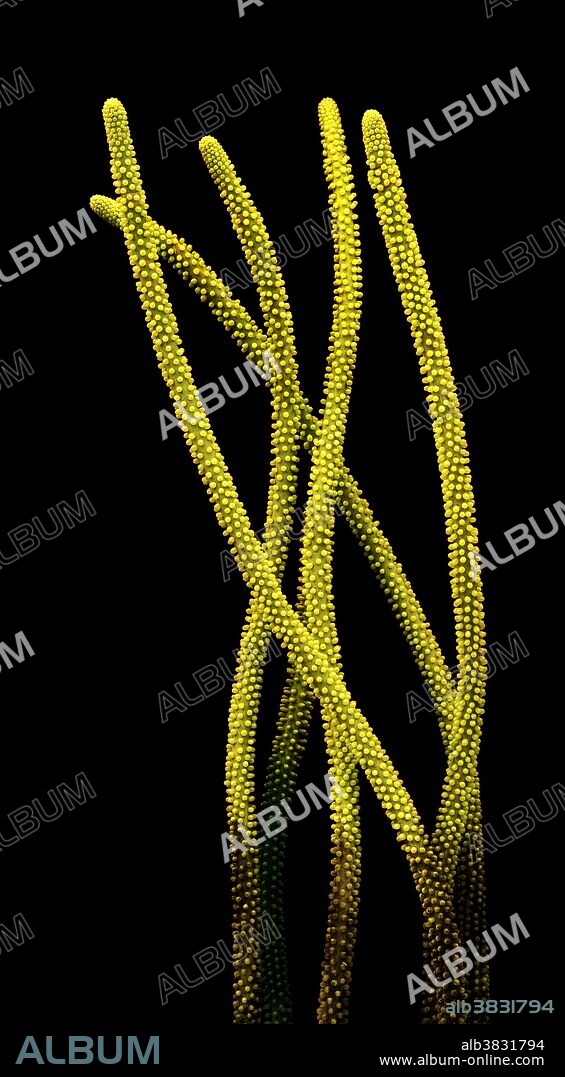alb3831794
Burgess Shale algae

|
Ajouter à une autre Lightbox |
|
Ajouter à une autre Lightbox |



Avez-vous déjà un compte? S'identifier
Vous n'avez pas de compte ? S'inscrire
Acheter cette image.
Sélectionnez l'usage:

Titre:
Burgess Shale algae
Légende:
Voir la traduction automatique
Reconstruction of the dasycladacean algae, Margaretia dorus, from the Middle Cambrian Burgess Shale of British Columbia. This alga was recognized by Charles Walcott in the early 1900s as being cylindrical like a sea whip, but later workers described it as having strap-shaped, kelp-like fronds. After examining specimens in the Smithsonian collection, Terry Chase recognized it as a primitive, cylindrical dasycladacean algae whose spiraling arrangement of holes were attachment points for bead-like branches that projected perpendicularly from the central stalk. Though the side branches were not obvious in the Burgess Shale specimens, this concept was adopted for an exhibit reconstruction of the Burgess Shale biota for the Smithsonian. Specimens later recovered from the Middle Cambrian Wheeler Shale of Utah confirmed Chase's speculation. They are cylindrical with beautifully preserved bead-like projections from each hole. Similar algae, like Rhabdoporella from the basal Ordovician of Texas, display a similar structure. Silurian limestones in Sweden are composed almost entirely of these cylindrical dasycladaceans.
Crédit:
Album / Science Source / Chase Studio
Autorisations:
Taille de l'image:
3315 x 6010 px | 57.0 MB
Taille d'impression:
28.1 x 50.9 cm | 11.1 x 20.0 in (300 dpi)
Mots clés:


 Pinterest
Pinterest Twitter
Twitter Facebook
Facebook Copier le lien
Copier le lien Email
Email
